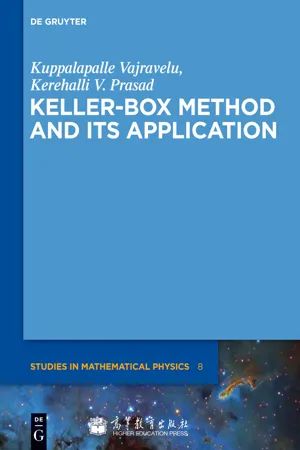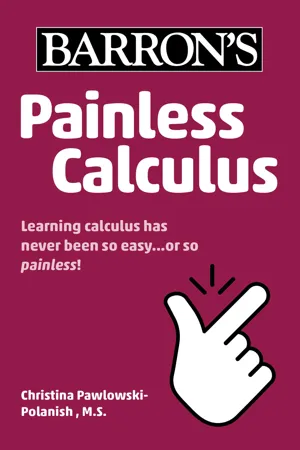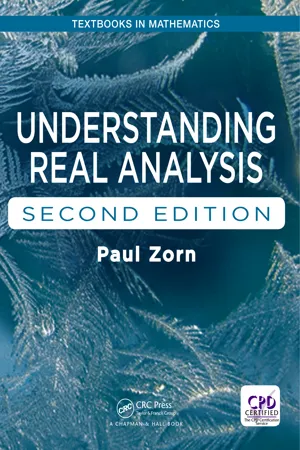Mathematics
Linear Approximations and Differentials
Linear approximations and differentials are mathematical tools used to estimate the value of a function near a specific point. The linear approximation is a straight-line approximation to a function, while the differential represents the change in the function's value due to a small change in the independent variable. These concepts are particularly useful in calculus for making quick and accurate estimations.
Written by Perlego with AI-assistance
Related key terms
5 Key excerpts on "Linear Approximations and Differentials"
- eBook - ePub
- Frank Werner, Yuri N. Sotskov(Authors)
- 2006(Publication Date)
- Routledge(Publisher)
4 Differentiation
In economics, there are many problems which require us to take into account how a function value changes with respect to small changes of the independent variable (e.g. input, time, etc.). For example, assume that the price of some product changes slightly. The question is how does this affect the amount of product customers will buy? A useful tool for such investigations is differential calculus, which we treat in this chapter. It is an important field of mathematics with many applications, e.g. graphing functions, determination of extreme points of functions with or without additional constraints. Differential calculus allows us to investigate specific properties of functions such as monotonicity or convexity. For instance in economics, cost, revenue, profit, demand, production or utility functions have to be investigated with respect to their properties. In this chapter, we consider functions f : Df → ℝ depending on one real variable, i.e. Df ⊆ ℝ.4.1 LIMIT AND CONTINUITY
4.1.1 Limit of a function
One of the basic concepts in mathematics is that of a limit (see Definition 2.6 for a sequence). In this section, the limit of a function is introduced. This notion deals with the question of which value does the dependent variable y of a function f with y = f (x) approach as the independent variable x approaches some specific value x0 ?Definition 4.1 The real number L is called the limit of function f : Df → ℝ as x tends to x0 if for any sequence {xn } with xn ≠ x0 , xn ∈ Df , n = 1, 2, . . . , which converges to x0 , the sequence of the function values {f (xn )} converges to L.Thus, we say that function f tends to number L as x tends to (but is not equal to) x0 . As an abbreviation we writeNote that limit L must be a (finite) number, otherwise we say that the limit of function f as x tends to x0 does not exist. If this limit does not exist, we distinguish two cases. If L = ±∞, we also say that function f is definitely divergent as x tends to x0 , otherwise function f is said to be indefinitely divergent as x tends to x0 - eBook - ePub
- Kuppalapalle Vajravelu, Kerehalli V. Prasad, Higher Education Press(Authors)
- 2014(Publication Date)
- De Gruyter(Publisher)
Chapter 1Basics of the Finite Difference Approximations
In this chapter we introduce the essentials of finite difference approximations for solving linear/nonlinear differential equations. In Section 1.2 , we study the time-dependent differential equations beginning with the initial value problem and then present some theoretical issues pertaining to the equations. Oftentimes when dealing with nonlinear differential equations, the questions of the existence and uniqueness of a solution are of importance, and inveterate. Section 1.3 , deals with the discretization of the differential equations and the solution processes for the coupled boundary value problems (BVPs). Further, it also explains the differences between the single-step and multi-step methods of solving BVPs. In Section 1.4 , we extend the ideas of the prior section to obtain the numerical solutions for partial differential equations (PDEs). Finally, in Section 1.5 we present the numerical solutions to the PDEs, viz., elliptic, parabolic and hyperbolic differential equations.1.1 Finite difference approximations
Our goal is to find approximate solutions to differential equations, i.e., to find a function (or some discrete approximation to this function) which satisfies a given relationship between its derivatives on some given region of space and/or time, along with some boundary conditions at the edges of the domain. In general this is a difficult problem and only rarely can an analytic formula be found for the solution. A finite difference method proceeds by replacing the derivatives in the differential equations by finite difference approximations. This gives a large algebraic system of equations to be solved in place of the differential equation, something that is easily solvable on a computer. Before tackling this problem, we first consider the more basic question of how we can approximate the derivatives of a known function by finite difference formulas based only on values of the function itself at discrete points. - eBook - ePub
- Cinzia Bisi, Rita Fioresi(Authors)
- 2024(Publication Date)
- Chapman and Hall/CRC(Publisher)
f) on the right:It is clear that, for small variations of x, that is, for small values of h, the two values df and ∆(f) are very close, while, if we consider large variations of h, the two values can be very different.The linear approximation is very important when we want to estimate the error of a measurement. Let us see an example to clarify this important application.Example 3.1.3 We compute the error we get for the volume V of a sphere, assuming a small measurement error of its radius r. Equivalently, we can also think to the same question, as the calculation of the change in the volume of a sphere, when we consider small changes in its radius.Let us consider a sphere of radius r0 = 10 cm with uncertainty of the measurement of 0.5%. This means that ∆r = (0.5/100) × 10 cm = 0.05 cm. From the formula of the linear approximation (3.2), we have that:V ( r ) − V (r 0) ≃V ′(r 0) ( r −r 0) , Δ ( V ) = V ( r ) − V (r 0) , Δ r = r −r 0where the volume of the sphere is given by: V (r) = 4πr3 /3. We have immediatelyfrom which we can compute the volume change through the formula (3.2):V ′( r ) = 4 πr 2Δ V = V ( r ) − V (We can also estimate the relative error, that is, the error percentage:r 0) ≃ 4 π ⋅10 2⋅ 0.05 ≃ 63cm 3.We have a relative error of 1.5%.≃V ( r ) − V (r 0)V ( r )63≃ 0.015.4 π10 3/ 33.2 The Derivative as Rate of Change
Another important application of the concept of derivative is through its interpretation as rate of change - eBook - ePub
- Christina Pawlowski-Polanish(Author)
- 2021(Publication Date)
- Barrons Educational Services(Publisher)
x.MATH TALK!If you zoom in on the graph of a curve and its tangent line at the point of tangency, they both appear linear and indistinguishable. For example, consider the graph of the function f (x) = x2 + 1 and its tangent line y = 1 at the point (0, 1) shown below.When zooming in on the point (0, 1), the graph of f (x) appears to be linear and takes on the appearance of the tangent line y = 1.This allows an x-value that is close to the point of tangency to be substituted into the equation of the tangent line and be used as an approximation for the actual function value.Local linear approximation is painless. There are three steps to follow.Step 1: Identify the function that is to be approximated and an x-value that is close to the given value that is to be approximated.Step 2: Find the equation of the tangent line of the function at the chosen x-value.Step 3: Substitute the given x-value into the tangent line equation and solve for y. This y-value is the approximation value and is either an overestimate or an underestimate of the actual value on the curve.Example 6:Use local linear approximation to approximate .Solution:Step 1: Identify the function that is to be approximated and an x-value that is close to the given value.The function being used is the square root function, . The given x-value is 4.1. A close x-value that can be easily evaluated is x = 4.Step 2: Find the equation of the tangent line of the function at the chosen x-value.To find the point of tangency, evaluate . The point of tangency is (4, 2). To find the slope of the tangent line, evaluate the derivative at x = 4:The equation of the tangent line is .Step 3: Substitute the given x-value into the tangent line equation and solve for y:Therefore, .Typing into the graphing calculator yields the value 2.024845672. This is very close to the approximated value of 2.025 found using the equation of the tangent line in Example 6 - eBook - ePub
- Paul Zorn(Author)
- 2017(Publication Date)
- Chapman and Hall/CRC(Publisher)
What is really meant, for example, by the slope of a curve at a point? What if the graph of f is not a smooth curve at all, but ragged or broken? To skirt such problems, we can consider linear functions, for which no such troubles arise. And deservedly popular in elementary calculus courses Definition 4.2 (Linear approximation). Let f be a function and a a domain point for which f ’ (a) exists. The linear approximation to f at a (also known as the first ‐ order approximation) is the linear function ℓ a defined by ℓ a (x) = f (a) + f ′ (a) (x - a). Observe some basic properties of the linear approximation: Simplest examples : If f (x) = x 2 and a = 2,. then ℓ 2 (x) = f (2) + f ′ (2) (x - 2) = 4 + 4 (x - 2) = - 4 + 4 x. If f (x) = x 2 and a = 0, then Figure 4.1 Two views of linear. approximation. ℓ 0 (x) = f (0) + f ′ (0) (x - O) = 0 + 0 (x - O) = 0. Shared values — up to a point : The functions f and ℓ a “agree to first order” at x = a : f (a) = ℓ a (x) and f ′ f ′ ℓ a ′ (a). (The second fact holds because ℓ a, being linear, has constant derivative.) Away. from x = a, anything can happen. In the case of f (x) = x 2 and l 3 (x) = 9 + 6(x - 3), for example, we have f ( - 42) = 1764 and f ′ ( - 42) = - 84, while ℓ 3 ( - 42) = - 261 and ℓ 3 ′ (- 42) = 6. Graphical views : The close connections between f and ℓ a are reflected in their respective graphs. Indeed, the graph of ℓ a is in a natural sense the line that best fits” the f ‐graph at x = a. In elementary calculus parlance, this line is called the tangent line at x = a. The word tangent” suggests “touching,” and in many cases this line does indeed touch but not cross” the graph of f at the point (a, f (a)), as illustrated in Figure 4.1 (a). But in other cases the graphs of f and ℓ a are seriously intertwined, as Figure 4.1 (b) and the following Example illustrate
Index pages curate the most relevant extracts from our library of academic textbooks. They’ve been created using an in-house natural language model (NLM), each adding context and meaning to key research topics.




